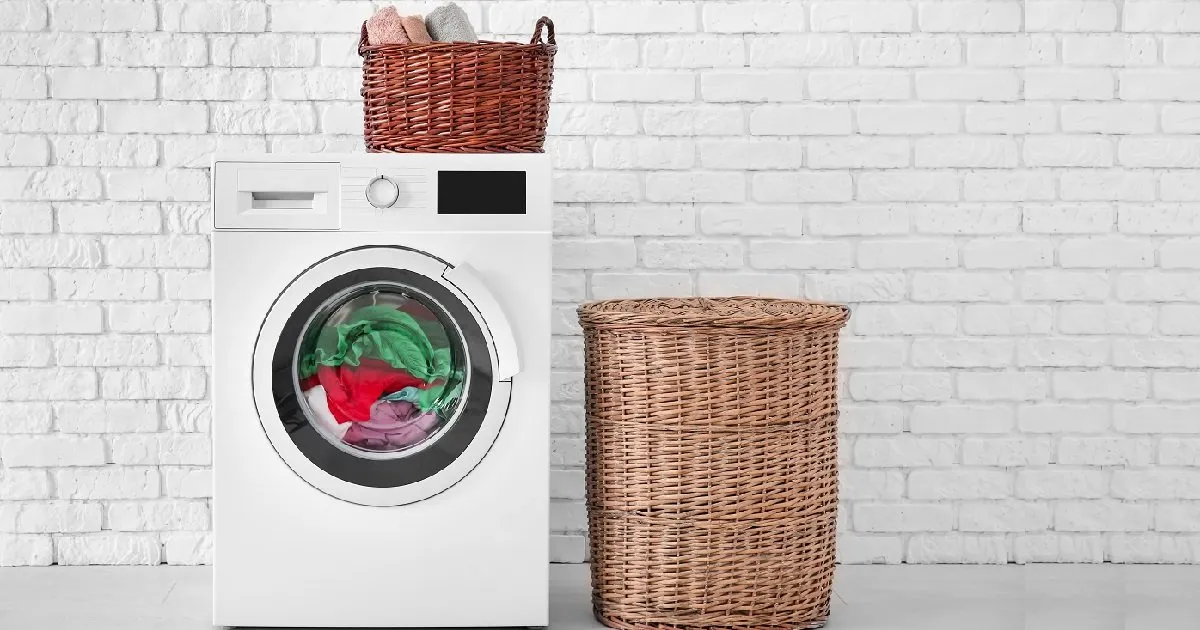Nothing is more infuriating than going to move your laundry into the dryer only to find your clothes sopping wet. Your washing machine doesn’t spin but makes a grinding noise. You’re now left with soggy clothes that will take hours to dry on the line.
The spin cycle is one of the important components of your washing machine, it removes water from your clothes so that they can easily dry. If your washing machine can’t extract the water from your clothes but make grinding noise then there is a problem.
Washing machine making grinding noise not spinning. Some of the easiest and simplest ways to fix the no spin or grinding in your washing machine are; Replace the actuator, Rebalance the load in your washer, check out the drive belt and check out the drainage pump.
In this article, we will discuss this in detail and a few other approaches to help you fix the no-spin and grinding noise issue in your washer.

Potential Causes of the No Spin But Grinding Noise in Your Washing Machine
Unbalanced Laundry
One of the common reasons why your washing machine will not spin but only makes grinding noise is an uneven distribution of load in the drum. Trying to wash large and heavy items which are not evenly distributed may cause your washing machine to not spin. This occurs when the weight of the items is on one side of the washer. You may experience this often when you are trying to wash things like your comforter and shoes.
Worn-Out Motor Brushes
The motor brushes in your washing machine are used to connect the drum to the motor. These brushes may wear out over time. When this happens your washing machine will still be able to fill up with water and drain normally but the drum itself will not be able to spin and your clothes won’t be washed.
Blockage of the Drain Pump
The blockage of the drain pump is one of the common reasons why your washer won’t spin but makes a grinding noise. The debris from your clothes gets stuck up within the outlet pipe preventing the free flow of water in and out of your washing machine. However, the drainage hose can also be clogged with debris, dirt, hairpin, or the buildup of lint. When the drainage pump is blocked your washing machine won’t go into a spin cycle until it has been drained.
Similar Reads:
How to fix a washing machine noise when spinning
How to fix the whistling noise in the kitchen faucet
Motor Coupling Issues
The motor coupling is responsible for connecting the motor to your washing machine’s transmission. However anytime your machine is overloaded, the motor coupling will break down to protect the motor and transmission. The motor coupling may also break down due to normal wear out. In that case, anytime the motor coupling breaks down your washing machine won’t spin and will mill make a grinding noise.
Faulty Stator Assembly
The function of the stator assembly is to interact with the rotator to create a strong magnetic field to help rotate the tub in either direction. However, if the windings on the stator get faulty the washing machine will not spin.
The Washing Machine Safety Switch
The lid switch is common among top-load washing machines, it is located below the main lid. The lid switch serves as a safety device to prevent people from being injured by the high-spinning washing machine. However, if the lid switch is faulty or damaged the washing machine will not spin. The lid switch may break down electrically or mechanically.
Damaged Drive Belts
Both front-load and top-load machines won’t spin when their drive belt are worn-out. The function of the drive belt is to move the agitator and the spinning basket in your washing machine. The drive also controls the movement of the agitator, and wash load and contributes to the overall rotation of the drum. An extremely worn-out may cause your washing machine to skip a cycle and may even prevent your washer from starting at all.
Excessive Foam in Your Washing Machine
If you use a high-efficiency (HE) washing machine, then you also need to use a HE detergent that doesn’t foam. However, if the foam is too much the sensors in your washing will sense the foam of the detergent and think the washer is too full. When this happens your washing won’t spin and leave you with wet clothes.
The Washing Machine is Overloaded
If your washing machine is overstuffed with laundry it may be full but not spin. Overloading your washing machine will make the drum become very heavy and put too much on weight the motor. When this happens the washer will not spin and will only grinding noise. Even though some washing machines have detectors to alert you when you’ve overloaded your washer but many don’t have this feature. Your washing machine won’t recognize the problem until it is filled with water.
Burnt Out Motor
One of the reasons why your washing machine may not spin properly or not spin at all is a burnt-out motor. However, a burn-out motor may induce mid-cycle in your washing machine when it tries to spin. This may happen even though the machine fills and agitates normally washing.
Unbalanced Washing Machine
Your washing machine will spin when it isn’t balanced correctly. When this happens your washing machine will not spin properly. In most cases, the washing machine will make a loud grinding noise and vibrate when trying to spin.
How to Fix Washing Machine Making Grinding Noise But not Spinning
Rebalance the Load in Your Washing Machine
Sometimes, the issue is not the number of clothes in your washing machine but how the laundry is distributed. pillows and comforters are the major cause of unbalanced load in your washer leading to an unbalanced drum and thus creating a significant grinding noise and will not spin properly.
To remedy this you need to rearrange the clothes within your washing machine. You can also remove some of your clothes, redistribute them and spin the smaller items first.
Check Out Your Washing Machine Lid Switch
The lid switch is a safety feature designed to prevent your washing from spinning when it’s open. This is to protect people from being injured by the fast-spinning machine. Some models may not spin at all if the lid switch isn’t working but others will allow the washing machine to fill but it won’t spin.
The lid switch is most found below the lid on the top of your washing machine. Inspect to find out if it makes good contact or is bent.
In case it is bent you should bend it back into shape. However, if the lid is broken or damaged you need to replace it.
Check the Drain Trap
Front-loading washers are known to clean a large amount of laundry without wasting water but unfortunately, they gather up a lot of lint in the washing process than a top-a top-load washing machine this causes the drain trap to overflow and makes your washer spin slowly, the machine eventually stops spinning when the drain trap gets clogged. To remedy this problem you need to clean up the drain filter.
Check Out the Drainage Pump
Normally your washing machine won’t spin, even though it will still agitate, when this occurs then it means there is a drainage pump. The drainage pump pushes the water out, so your clothes can spin properly and redistribute them throughout the washer.
However your drainage pump may be clogged with debris and dirt from your clothes .when this happens your washing machine will not spin until the water is discharged from the washer.
To remedy this problem you have to follow these few steps to clean the clogged drain pump:
- First, unplug your washing machine.
- Pull out your washing machine from the wall to easily get hold of the hose, which is usually located at the back
- Detach the drain hose from the back, it is mostly the largest hose in diameter connected to the drain pipe. Bear in mind to keep a bucket nearby to collect the drain water.
- Take away the other end of the hose first and use a wire hanger to remove all the clogged dirt and debris within the hose.
- Once that is done, reconnect the hose to your washing machine.
Replace the Actuator
Sometimes based on how your washing machine is programmed it won’t fill with water, most machines will fill with water but won’t drain. This is because the actuator shifts back and forth between spin and agitate. A faulty actuator will not have enough strength to shift the transmission to spin. To remedy this problem you need to replace the actuator.
Replace Worn-Out Spin Bearing or Basket Drive
The spin bearing allows the inner tub to spin freely inside the outer tub. When this occurs you will hear loud grinding noise during the spin cycle. Call up a professional to help you fix this issue.
Replace the Worn-Out Clutch
The clutch facilitates your washer to spin at high speed. However, if the clutch is worn-out, it may prevent your washing machine from spinning well or not at all. To remedy this problem you will need to replace the clutch. Call up a professional to help you replace the clutch.
Replace the Worn-Out Motor Coupler
The motor coupler is usually made of plastic and put on one side of the shaft motor and the transmission on the other side. The motor is responsible for connecting the electric motor to the system. However, if the motor coupler is worn-out you hear the motor running and making grinding noise but no spin.
Reduce the Load Inside Your Washing Machine
Overstuffing your washing machine with heavy laundry comforters, blankets and shoes can prevent your washer from spinning. When this occurs, the best way to handle this problem is to remove some of your soggy clothes from your washer.
Maybe the amount of laundry is not the problem, your washer might need a simple reset to start spinning. To do this unplug the machine for about five minutes and try again.
Check Out the Drive Belt
Your washing machine will make a grinding noise and not spin when the drive belt is broken or has fallen off. Even though the washer will agitate it will still make loud grinding noise but the drum won’t spin.
To inspect the drive belt, unplug your washer. Then take out the back of your washing machine to find out if the belt is still on the pulley system. If you realize the belt has slipped off p it back to solve the problem. However, if the belt is worn-out or broken then you need to replace it.
Conclusion
Being left with soggy clothes dripping on the floor that will hours to dry can be distributed especially in the winter. Luckily enough we have discussed some of the best do-it-yourself procedures to help fix this problem. Figure out the source of the problem first so that you easily fix it. Call up a professional for a quick fix if you are contemplating anything.
- How to Chew Quietly While Eating-Effective Tips - April 14, 2023
- Why is My Clutch Pedal Squeaking – Causes & Fixes - April 14, 2023
- Propane Tank Making Hissing Noise (Solved) - February 25, 2023

